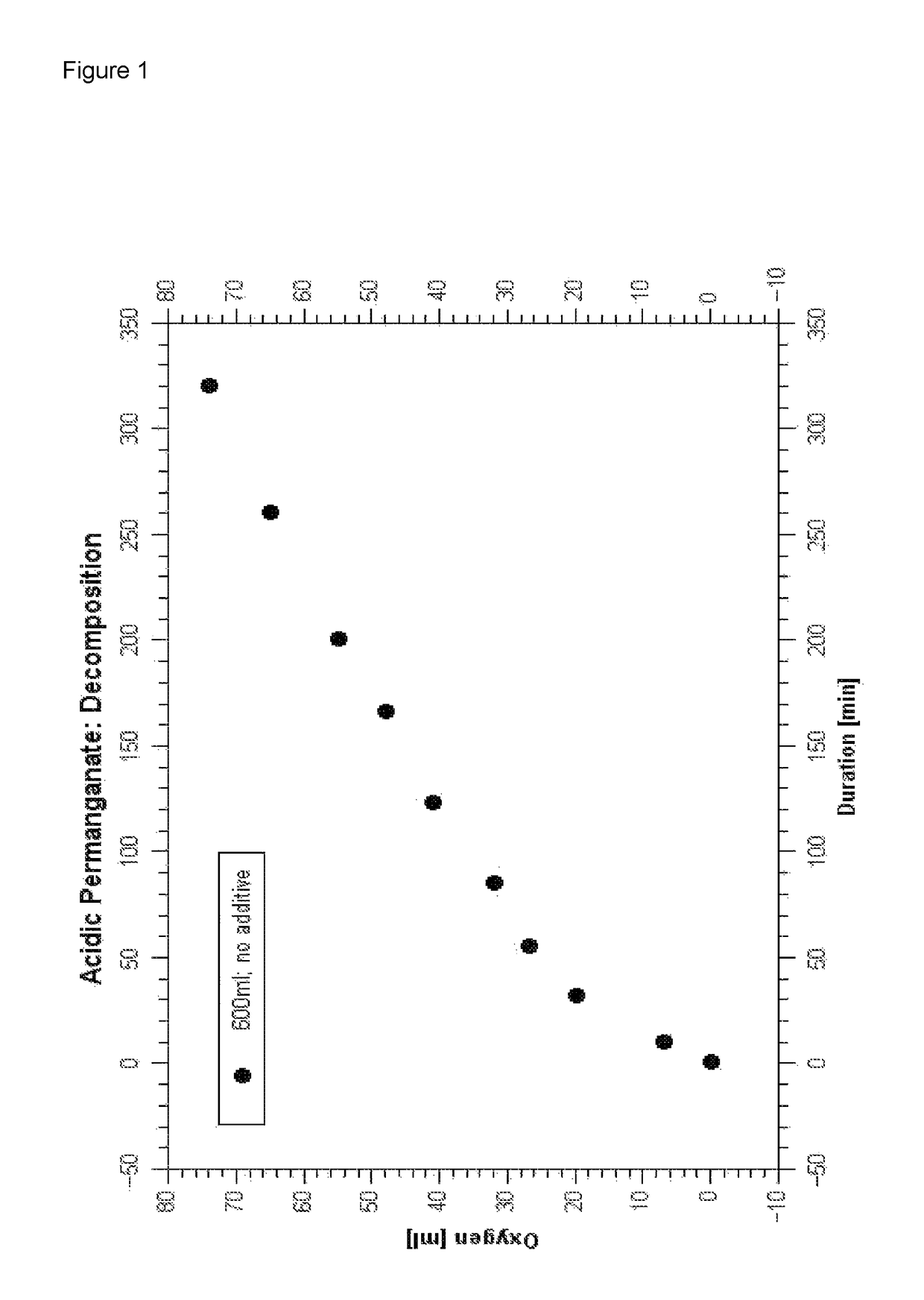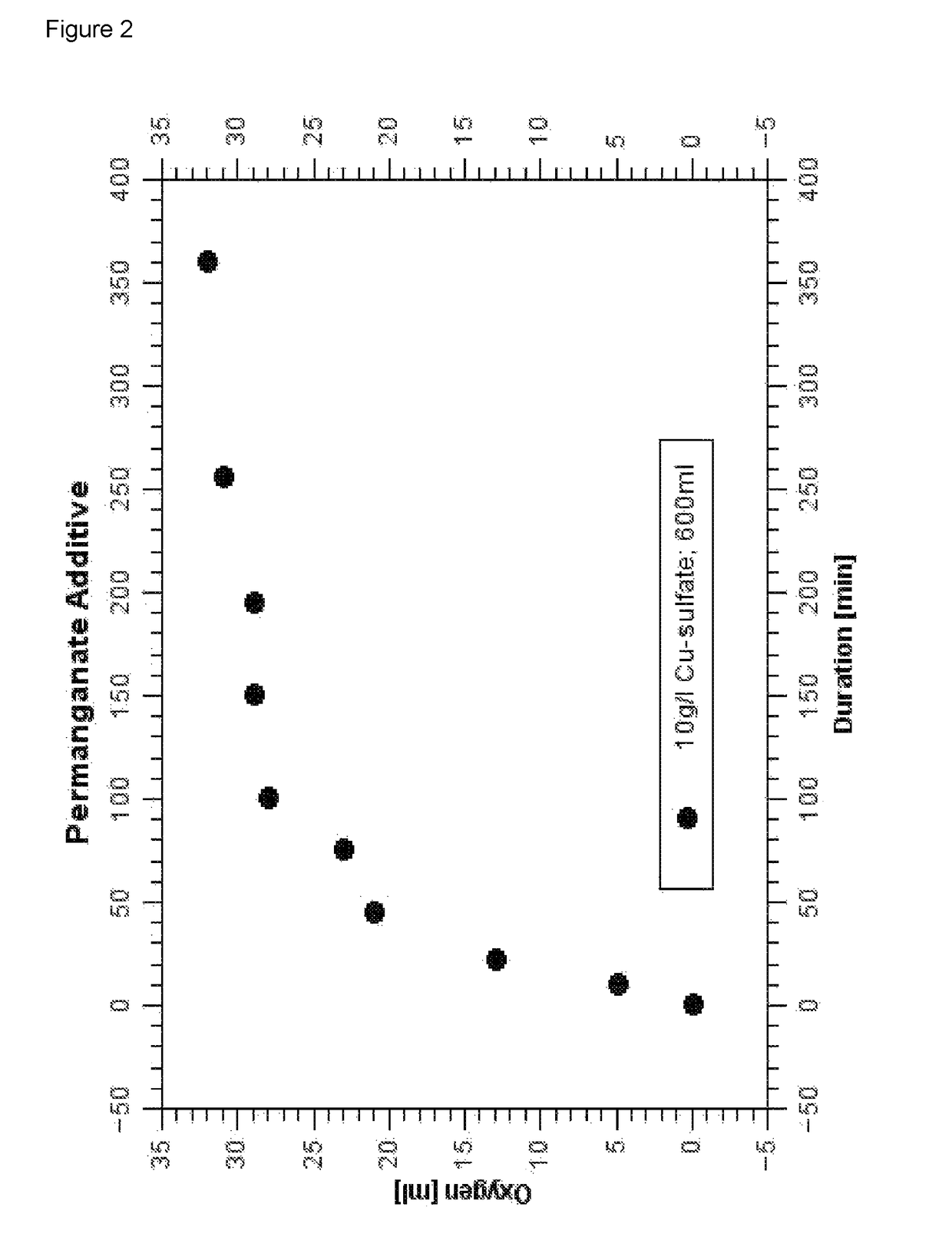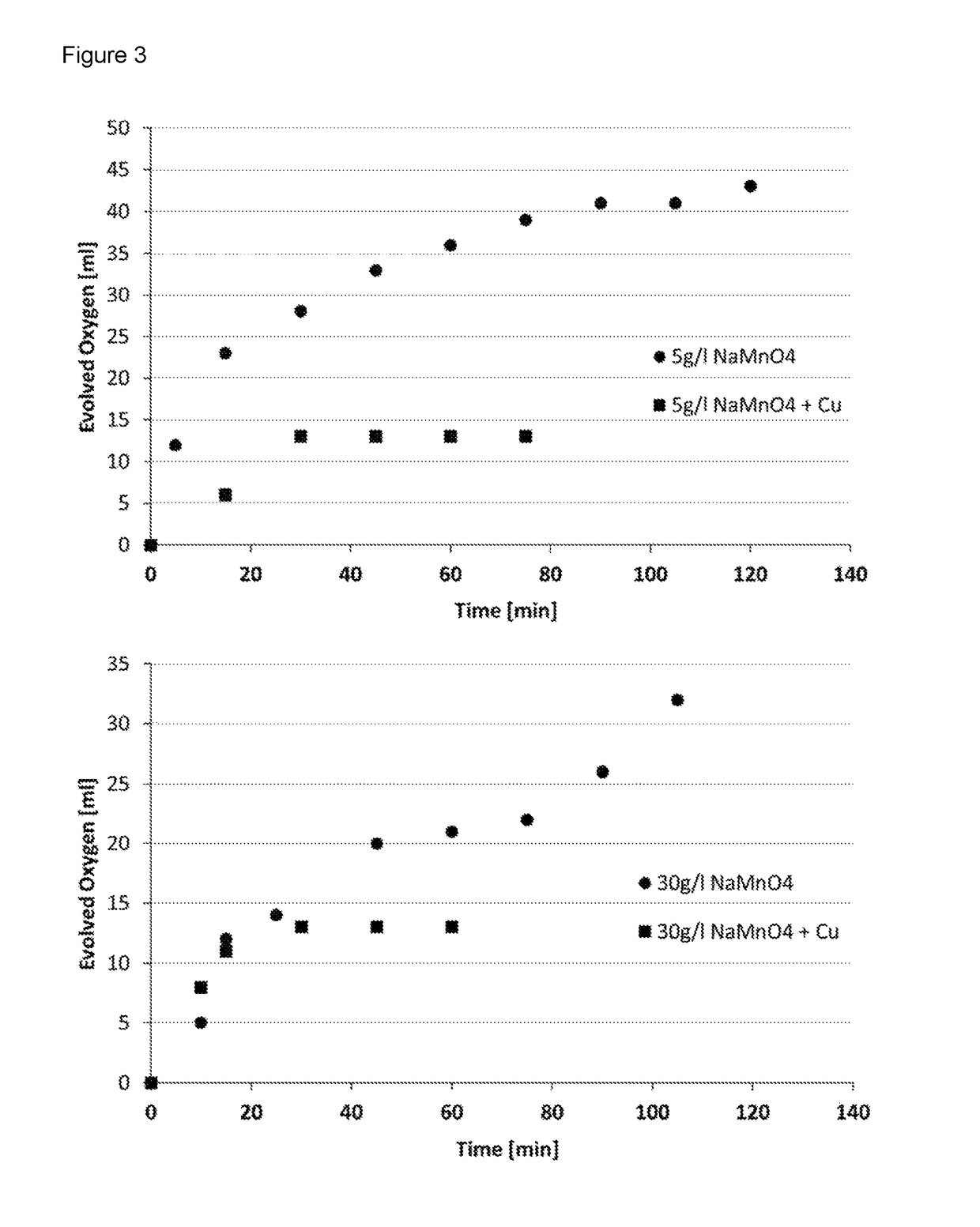Composition and process for metallizing nonconductive plastic surfaces
a non-conductive plastic surface, etching solution technology, applied in the direction of liquid/solution decomposition chemical coating, surface treatment composition, coating, etc., can solve the problems of high cost, laborious preparation, toxic solutions based on chromosulphuric acid,
- Summary
- Abstract
- Description
- Claims
- Application Information
AI Technical Summary
Benefits of technology
Problems solved by technology
Method used
Image
Examples
example 1
[0154]In a plating line, ABS / PC—blend parts (Mini Front Finishers made of Bayblend T45PG) were plated. To achieve this, the line comprised the following process steps: a 3901 tank containing a 40% solution of ethyldiglycol acetate at 25±1° C. (pretreatment step for 7 minutes), a 525 l tank containing a solution of 100 g / l sodium permanganate and 10 g / l sulfuric acid (96%) at 70° C. (comparative acidic etching solution without metal ion according to (iii); etching step instead of inventive process step A) for 10 minutes), a 340 l tank containing a solution made of 25 ml / l (96%) sulfuric acid and 30 ml / l of 30% hydrogen peroxide (process step A ii) at 40° C.), a pre-dip solution (preliminary dipping step, 300 ml / l 36% hydrochloric acid at ambient temperature), an activator bath (process step A iii), colloidal palladium, 40 mg / l, 37° C. for 5 minutes), an accelerator (process step A iv), Adhemax ACC1 of Atotech at 45° C., for 5 minutes), an electroless nickel bath (process step A v), A...
example 2
[0157]In an application laboratory, plastic parts of different composition were plated: ABS (Novodur P2MC) and ABS-PC-blends (Bayblend T45PG). Two 701 tanks were used, containing a 40% solution of ethyldiglycol acetate at 25° C. for ABS-PC, and a solution of 10% butylglycol and 15% ethyldiglycol acetate at 45° C. for the ABS. The ABS-PC parts were pre-treated in its respective solution for 7 minutes and the ABS parts were pre-treated in its respective solution for 10 minutes (pretreatment step). A 170 l etching tank contained an acidic permanganate solution (100 g / l sodium permanganate, 10 g / l 96% sulfuric acid, 70° C.). All plastic parts were treated with the acidic permanganate solution (comparative acidic etching solution without metal ion according to (iii); etching step instead of inventive process step A)) for 10 minutes. All further process steps were the same as are already described in example 1, just in smaller volumes of 701.
[0158]After one week of plating, about 5 kg wet...
example 3
[0159]In a production line, ABS plastic substrates were plated. To achieve this, a 3500 l tank was filled with a solution of 10% butylglycol and 15% ethyldiglycol acetate and held at 45° C. and the substrates treated therein (pretreatment step for 10 minutes). After one rinse step with water, the plastic substrates were treated in a 4800 l tank holding a solution of 100 g / l sodium permanganate and 10 g / l sulfuric acid at 70° C. (comparative acidic etching solution without metal ion according to (iii); etching step instead of inventive process step A)) for 10 minutes. This tank was connected to a lamellar clarifier (3501 volume) to separate sludge from the solution. After one rinse, the plastic substrates were treated in an alkaline permanganate solution at 60° C. (30 g / l NaMnO4 and 20 g / l NaOH) for 10 minutes; process step A° i)). The plastic surfaces were then cleaned from manganese dioxide using acidic hydrogen peroxide (25 ml / l 96% sulfuric acid and 30 ml / l of 30% hydrogen peroxi...
PUM
| Property | Measurement | Unit |
|---|---|---|
| concentration | aaaaa | aaaaa |
| concentration | aaaaa | aaaaa |
| concentration | aaaaa | aaaaa |
Abstract
Description
Claims
Application Information
 Login to View More
Login to View More - R&D
- Intellectual Property
- Life Sciences
- Materials
- Tech Scout
- Unparalleled Data Quality
- Higher Quality Content
- 60% Fewer Hallucinations
Browse by: Latest US Patents, China's latest patents, Technical Efficacy Thesaurus, Application Domain, Technology Topic, Popular Technical Reports.
© 2025 PatSnap. All rights reserved.Legal|Privacy policy|Modern Slavery Act Transparency Statement|Sitemap|About US| Contact US: help@patsnap.com



